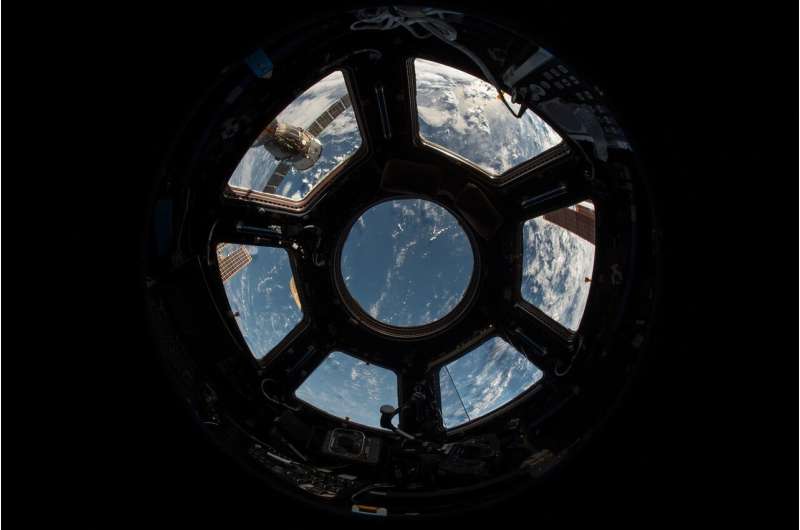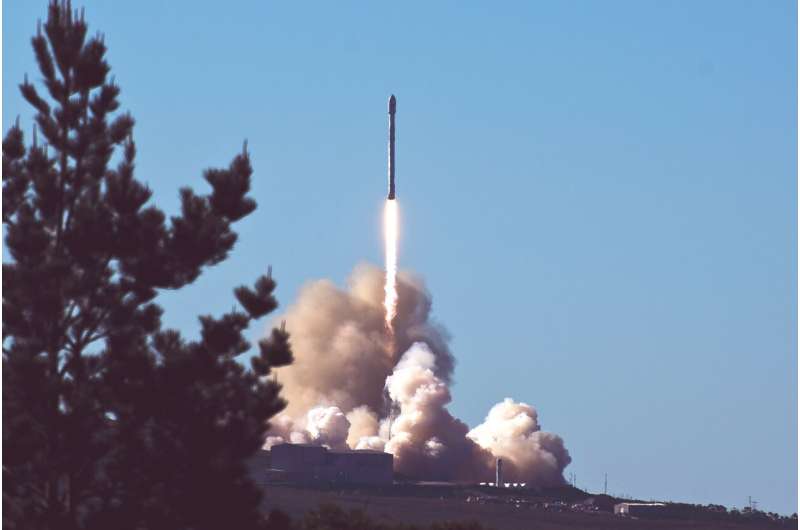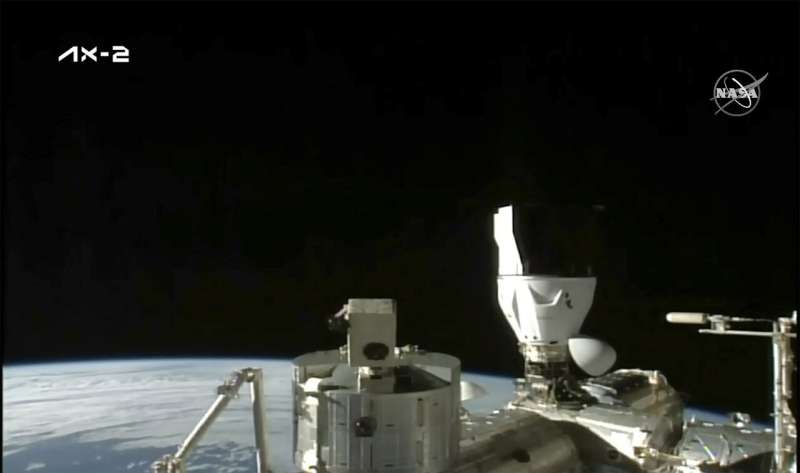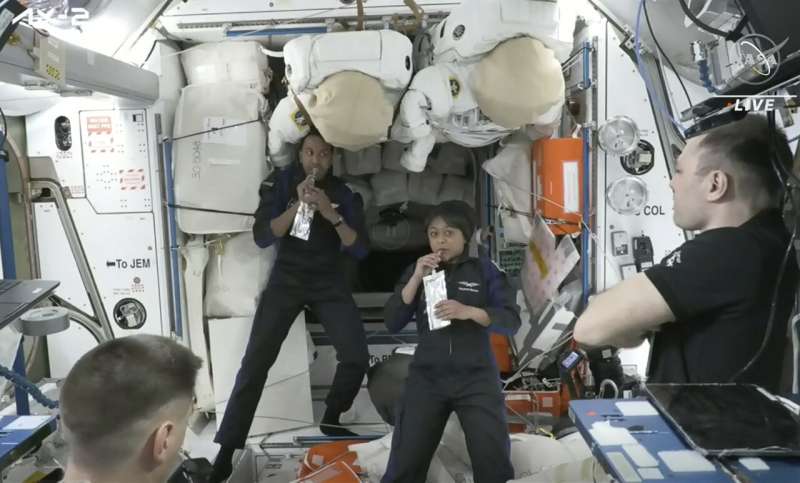L3Harris wins IARPA HAYSTAC contract
Tuesday, 23 May 2023 00:59
L3Harris Technologies announced a contract May 22 from the Intelligence Advanced Research Projects Activity to provide technology to help characterize and predict human mobility.
NGA to map lunar geography to enable GPS on the moon
Monday, 22 May 2023 23:23
The National Geospatial-Intelligence Agency is working with NASA to develop a positioning and navigation system to guide visitors around the surface of the moon “as accurately and as safely as GPS does on Earth.
ISS welcomes its first Saudi astronauts, in private mission
Monday, 22 May 2023 21:20 A SpaceX capsule carrying two Saudi astronauts docked with the International Space Station on Monday, as part of a private mission chartered by Axiom Space.
Rayyanah Barnawi, a scientist who became the first Saudi woman to go into space, and Ali Al-Qarni, a trained fighter pilot, are the first two people from their country to fly to the orbital outpost.
"Greetings from outer space, I'm h
A SpaceX capsule carrying two Saudi astronauts docked with the International Space Station on Monday, as part of a private mission chartered by Axiom Space.
Rayyanah Barnawi, a scientist who became the first Saudi woman to go into space, and Ali Al-Qarni, a trained fighter pilot, are the first two people from their country to fly to the orbital outpost.
"Greetings from outer space, I'm h NATO faces hurdles in acquiring commercial satellite imagery
Monday, 22 May 2023 21:09
Commercial satellite imagery is helping NATO address its need for persistent monitoring in spite of cost, technical and licensing issues.
Axiom's private mission inches commercial space station dreams closer to reality
Monday, 22 May 2023 17:10
Axiom Space made history in 2022 with the first all-private mission to the International Space Station. The company is ready to do it again, but with more focus on its endgame: having its own commercial space station in what could potentially be a crowded playing field in low-Earth orbit.
"The goals of these missions, which we sometimes call precursor missions, are to build up first the Axiom internal operations capability—the tools, the processes—to train flight controllers that are going to be required down the line to operate our Axiom Station in the future," said Axiom Space's Derek Hassmann, chief of mission integration and operations.
The Axiom Mission 2 (Ax-2) flight is slated to send a crew of four to the International Space Station inside SpaceX's Crew Dragon Freedom atop a Falcon 9 rocket from Kennedy Space Center's Launch Pad 39-A.
Liftoff is targeted for Sunday at 5:37 p.m. with a lone backup opportunity on Monday at 5:14 p.m.
Space Launch Delta 45's weather squadron forecasts only a 60% chance for good conditions with worse weather predicted for Monday.
As a Black astronaut sets his sights on the moon, he feels the weight of injustice on Earth
Monday, 22 May 2023 17:00
NASA astronaut Victor Glover Jr. will travel farther into space than any Black person before him when he pilots the Artemis II lunar mission in 2024.
But he's already embarked on a personal mission that hits closer to home on Earth.
He wants to take his fellow Americans to school and guide them deep into the nation's psyche, to help them reflect on the paradox of a nation that has a track record of oppressing Black people sending him on a trailblazing trip around the moon.
Because of that legacy of racism, Glover says it's his duty to impress upon people that his voyage will represent more than a scientific triumph.
During a conversation over Zoom about the beauty of space flight and the contradictions of American life, the 47-year-old Pomona, California, native says he recommends to audiences at his public speeches and his co-workers at NASA a choice set of reading, listening and viewing materials.
He starts with the U.S. Constitution, whose words resound with the false promise of equality that has led to so much racial upheaval.
OneWeb announces Innovation Challenge Winners
Monday, 22 May 2023 15:56
OneWeb announced six finalists May 22 for its annual Innovation Challenge.
Exploration Upper Stage Unveiled: Revolutionary Leap in Crew Safety, Cargo Capacity, and Deep Space Power
Monday, 22 May 2023 15:15
After Artemis I launched in November 2022 atop the only super heavy-lift rocket capable of carrying crew and large cargo to deep space in a single lift, James Savage went […]
DARPA selects Umbra to demonstrate radar imaging techniques
Monday, 22 May 2023 14:37
Umbra won a contract from the Defense Advanced Research Projects Agency to demonstrate novel collection techniques using synthetic aperture radar satellites, the company announced May 22.
Space station welcomes two Saudi visitors, including kingdom's first female astronaut
Monday, 22 May 2023 14:32
The International Space Station rolled out the welcome mat Monday for two Saudi visitors, including the kingdom's first female astronaut.
SpaceX's chartered flight arrived at the orbiting lab less than 16 hours after blasting off from Florida. The four guests will spend just over a week there, before returning to Earth in their capsule.
Space station welcomes 2 Saudi visitors, including kingdom's 1st female astronaut
Monday, 22 May 2023 14:32
The International Space Station rolled out the welcome mat Monday for two Saudi visitors, including the kingdom's first female astronaut.
Former NGA director Robert Cardillo joins Synthetaic’s board of directors
Monday, 22 May 2023 13:35
Synthetaic, a startup that uses artificial intelligence to analyze data from space and air sensors, announced May 22 that former director of the National Geospatial-Intelligence Agency Robert Cardillo has joined its board of directors.
Impact Observatory unveils IO Monitor
Monday, 22 May 2023 11:00
Impact Observatory unveiled an early access program May 22 for IO Monitor, the Washington-based company’s global mapping and monitoring product.
Defending Taiwan by countering China’s biggest threat
Monday, 22 May 2023 11:00
China’s anti-satellite capabilities are not the biggest threat to GPS. What should be much more of a concern to U.S.
China launches new science probes, SAR sat and replacement Beidou satellite
Monday, 22 May 2023 10:54
China conducted a pair of launches last week to replenish its Beidou navigation system and send science and radar tech test satellites into orbit.

